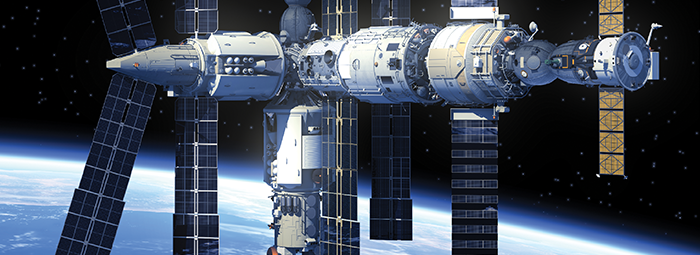
©2020 This excerpt taken from the article of the same name which appeared in ASHRAE Journal, vol. 62, no. 7, July 2020.
About the Author
John Constantinide, P.E., is a Florida-licensed mechanical engineer in Merritt Island, Fla., with over 10 years working on U.S. Eastern Range projects. Hamidreza Najafi, Ph.D., is an assistant professor of mechanical engineering at the Florida Institute of Technology in Melbourne, Fla.
Space is becoming the next medium for business opportunities, advancements in technologies and exploration for inhabiting planets, moons and areas outside our planet. Companies are developing systems that would permit short-term and, eventually, long-term human inhabitation of the moon, Mars and other extraterrestrial bodies; start-up firms are focusing on capsules and rockets for human spaceflight. With regulations relating to space launch and travel established and continually being reviewed in numerous countries, ASHRAE has an opportunity to propose standards, guidelines and codes relating to the indoor environment of extraterrestrial transport vessels, waypoint stations and buildings.
Environmental Control Systems: An Outer Space Perspective
The regulation of indoor air environments in extraterrestrial structures will need to be adjusted because the exterior environment of deep space is a near vacuum, with temperature extremes ranging from approximately −200 °F to 200 °F (approximately −129 °C to 93 °C).6 Objects in space are ubiquitous, varying in size from frozen gas or liquid droplets to meteors and asteroids, and these objects travel in a wide range of directions and at various speeds. Space objects traveling at high velocities relative to travel vessels in deep space may potentially damage thermal management machinery and accompanying accessories exposed to space.
The vacuum condition in outer space limits the options for heat rejection mechanisms to thermal radiation and the lack of gravity significantly, which affects how to effectively cool and heat the spacecraft’s interior environment. Due to the lack of resources and limited ability to send more supplies, reuse of air and water in deep space structures is vital. HVAC technologies used in Earth applications will need to be modified to accommodate deep space.
Similarly, environmental control equipment for planetary environments would vary planet by planet. Atmospheric conditions and gravity of planets differ from the outdoor environments on Earth, resulting in varying compositions of gases and radiation and differing temperature ranges. Depending on the planet, limited amounts of water and gases that create human breathing air may be present. With space agencies interested in sending humans to the moon and Mars,1,3 understanding their atmospheric conditions would be ideal to modify current HVAC technologies for facilities there.
The moon’s atmosphere is far less dense than Earth’s and is comparable to the conditions on the outer edges of the Earth’s atmosphere encountered by the International Space Station (ISS) in low-Earth orbit. Gases mainly found on the moon’s atmosphere include helium-4, deuterium (hydrogen-2), methane, ammonia, carbon dioxide, and differing isotopes of neon and argon. Gravity is present on the moon, although it’s 16.5% of the Earth’s gravity.7 Heat transfer and rejection equipment developed for the ISS may be a starting point for developing environmental control equipment for lunar facilities.
Read the Full Article
ASHRAE Members have free access to the full-text PDF of this article as well as the complete ASHRAE Journal archives back to 1997 in the Free Member Access Area.
Non-members can purchase features from the ASHRAE Bookstore. Or, Join ASHRAE!
Return to Featured Article Excerpts
Return to ASHRAE Journal Featured Article Excerpts